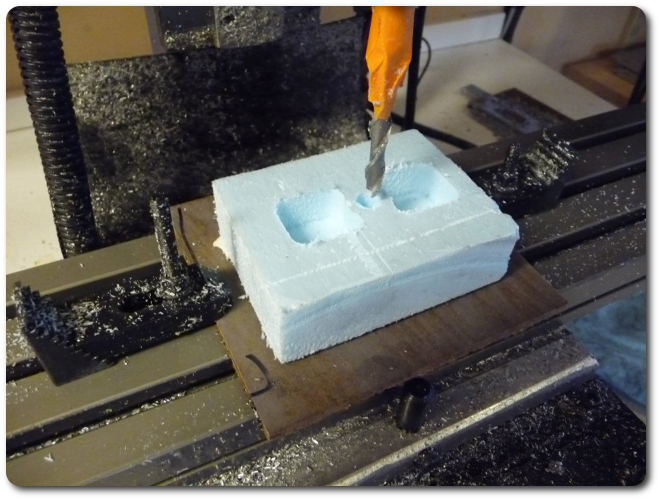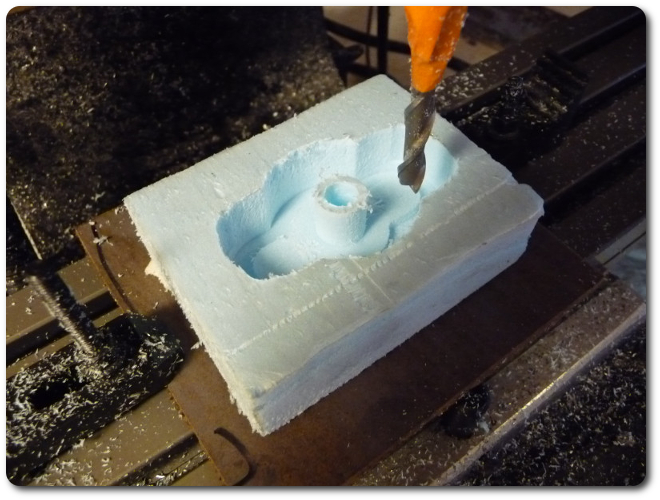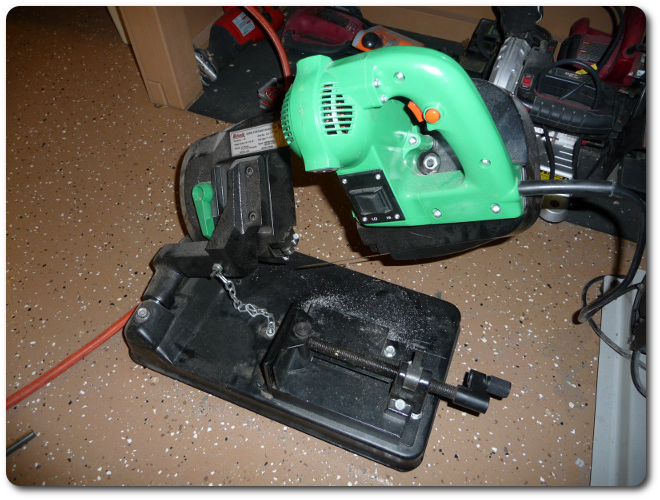

|
|
So many parts are designed specifically for a particular location. Keeping them organized helps.
|

|
|
Each slip ring is a complex assembly that allows unlimited rotation of 24 wires on its axis. The very same axis is also what mechanically secures each frame to its parent frame. Unfortunately, the slip ring is an electrical device only, not a load-bearing mechanical device. Therefore, I needed a way to satisfy both requirements, and in a small space. To this end, I designed a hollow, flanged tube, where the flanged end attaches to the inner frame, and the hollow end seats in the bearing that surrounds (but does not contact) the 24 wires.
|
|
These are the most complex parts in the project. I knew fabricating them would be troublesome, but I thought I'd first try making a single-piece flanged, hollow tube from aluminum billet instead of building a composite of a flange and a tube. I didn't expect this to work out, but I was curious to see if it could even be done. Don't even try to figure out how to mount this on the mill bed.
|

|

|

|

|

|
|
The proof of concept in the CAD/CAM world was promising. I still didn't expect it to work out with actual aluminum, but I wanted to see a real result of some kind. The orange tape, by the way, is there to make sure I never descend too far into the foam and tear up the mill bed. The sacrificial board under the foam provides a little freedom, but beyond that, it's bad news.
|

|

|

|
|
And believe or not, here's my little prototype.
|

|
|
Too bad it's just foam.
|

|
|
Now I was still eyeing the billet, but common sense said don't be an idiot. The cutting forces are substantial (look at the length, diameter, and "toothiness" of that end mill above with the orange tape!), and the mounting to the bed would be iffy at best. It would only take a slight slip to ruin the part, and the odds of that happening were really high.
|

|
|
Part of my concern with a composite mount was that it wouldn't be strong enough. In particular, the joint between the flange and hollow tube would be slim. To counteract this weak point, I decided to use steel for the flange. This way I could braze or weld it for strength. Unfortunately, I managed to break the blade on my portable bandsaw early in the fabrication, and because I was in the process of moving, its replacement was hopelessly packed away somewhere in a box.
|

|
|
And the full-sized bandsaw was also not accessible.
|

|


|